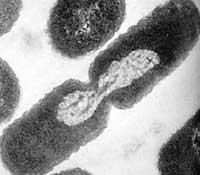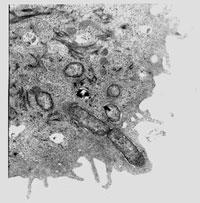Where do bacteria have the waist?
2002/01/01 Elhuyar Zientzia Iturria: Elhuyar aldizkaria
Bacteria multiply by two. Both cell offspring must receive the same genetic and protein material, in addition to being the same size. The cell below the required cell will not go ahead. But how do bacteria, without sophisticated molecular machines of eukaryotic cells, get to know where their center is? In the bacteria Escherichia coli have discovered that the family of proteins Min is involved.

Before the fragmentation of the bacteria, the structure called the Z ring is formed in the lower back. This squeezes the cell into two. This involves several proteins from the Min, Min C, Min D and Min E family. The binding of these proteins produces a movement of vibration that causes the propagation of waves to the outside. These waves will spread from one end of the cell to another. In this way, the Min C protein will be located at one end of the cell, Min D at the other end, while Min E will at the center. Thus, the formation of the Z ring depends on the gradient concentration of these proteins. The Min C prevents the formation of the ring, so it can only be generated in the center, where the concentration of Min C is very low.

Gai honi buruzko eduki gehiago
Elhuyarrek garatutako teknologia





